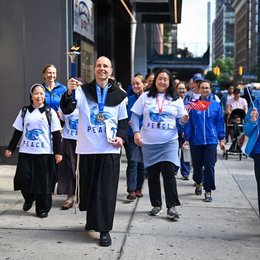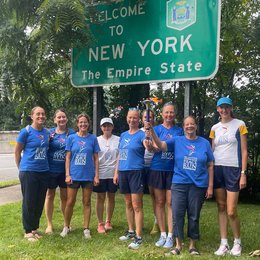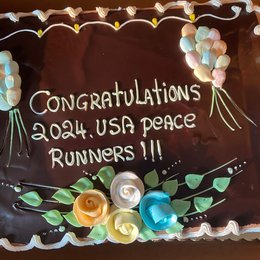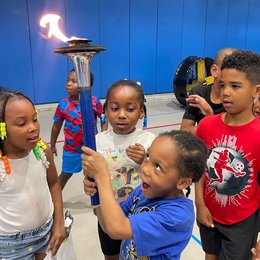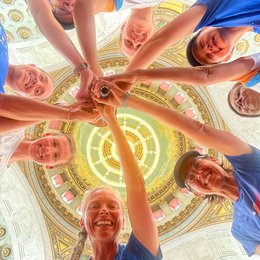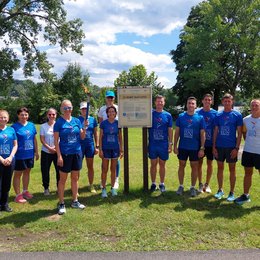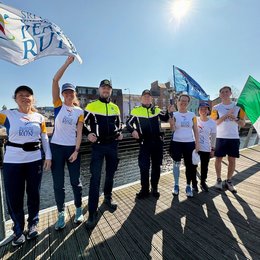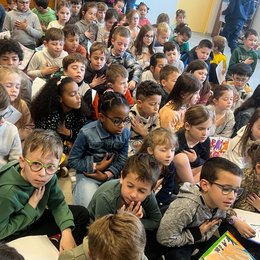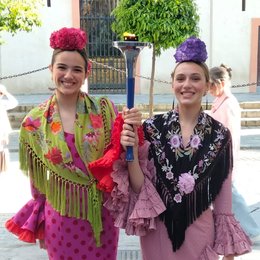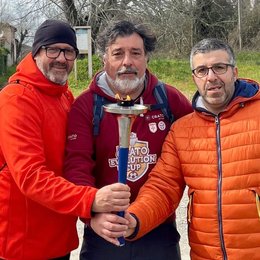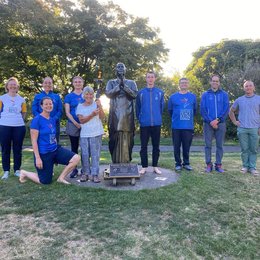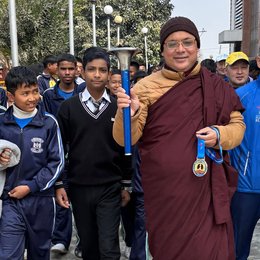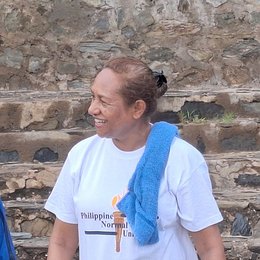
Recently Natabara and I (Salil) were inspired to embark on a road trip which in many ways became a history lesson of America and those who have helped shape it.
Enjoy this video Natabara made of our visits to the monuments and institutions of Washington, DC.

Starting in New York our journey truly began at the Jefferson Memorial - a remarkable structure whose creation was due in a large part to President Franklin D. Roosevelt.
We spent time here in silent reflection, amazed and grateful that we were the only visitors. Usually there's numerous people visiting. At the base of the domed roof, on top of the walls, is a Jefferson quote which encircles the monument. "I have sworn upon the altar of God eternal hostility against every form of tyranny over the mind of man."
I have always regarded this monument as a sacred space and to have it to ourselves was a rare and valued gift.

The memorial is constructed of marble from Vermont. which rests upon a series of granite and marble-stepped terraces. There are four panels in the interior which display lofty utterances from Jefferson.
On the panel of the southwest interior wall are excerpts from the Declaration of Independence, written in 1776:
"We hold these truths to be self-evident: that all men are created equal, that they are endowed by their Creator with certain inalienable rights, among these are life, liberty, and the pursuit of happiness, that to secure these rights governments are instituted among men. We ... solemnly publish and declare, that these colonies are and of right ought to be free and independent states ... And for the support of this declaration, with a firm reliance on the protection of divine providence, we mutually pledge our lives, our fortunes, and our sacred honor."
On the panel of the northwest interior wall is an excerpt from the 1777 Virginia Statute for Religious Freedom, except for the last sentence, which is taken from a letter of August 28, 1789, to James Madison:
"Almighty God hath created the mind free ... All attempts to influence it by temporal punishments or burthens ... are a departure from the plan of the Holy Author of our religion ... No man shall be compelled to frequent or support any religious worship or ministry or shall otherwise suffer on account of his religious opinions or belief, but all men shall be free to profess and by argument to maintain, their opinions in matters of religion. I know but one code of morality for men whether acting singly or collectively."
The quotes from the panel of the northeast interior wall are from multiple sources. The first sentence, beginning "God who gave ...", is from A Summary View of the Rights of British America. The second, third and fourth sentences are from Notes on the State of Virginia. The fifth sentence, beginning "Nothing is more ...", is from Jefferson's autobiography. The sixth sentence, beginning "Establish the law ...", is from a letter of August 13, 1790, to George Wythe.The final sentence is from a letter of January 4, 1786, to George Washington:
"God who gave us life gave us liberty. Can the liberties of a nation be secure when we have removed a conviction that these liberties are the gift of God? Indeed I tremble for my country when I reflect that God is just, that his justice cannot sleep forever. Commerce between master and slave is despotism. Nothing is more certainly written in the book of fate than these people are to be free. Establish the law for educating the common people. This it is the business of the state to effect and on a general plan."
The inscription on the panel of the southeast interior wall is redacted and excerpted from a letter of July 12, 1816, to Samuel Kercheval:
"I am not an advocate for frequent changes in laws and constitutions. But laws and institutions must go hand in hand with the progress of the human mind. As that becomes more developed, more enlightened, as new discoveries are made, new truths discovered and manners and opinions change, with the change of circumstances, institutions must advance also to keep pace with the times. We might as well require a man to wear still the coat which fitted him when a boy as civilized society to remain ever under the regimen of their barbarous ancestors."

Heading south to Lynchburg, VA we stopped by Virginia Blue Ridge Railway Trail to cycle beside the crystal clear Piney River.

Over lunch in Lynchburg, Natabara got inspired to visit Poplar Forest, Thomas Jefferson's retreat home.
After Jefferson's presidency this home served to provide him with a place for quiet reflection, writing and personal time.
Designed by Jefferson he obviously loved his quiet abode as he writes, "the best dwelling house in the state, except that of Monticello; perhaps preferable to that, as more proportioned to the faculties of a private citizen."
His granddaughter Ellen Randolph Coolidge later recalled Jefferson's days in Bedford County. "At Poplar Forest," Ellen wrote, "he found in a pleasant home, rest, leisure, power to carry on his favorite pursuits—to think, to study, to read—whilst the presence of part of his family took away all character of solitude from his retreat. His young grand-daughters were there to enliven it for him, to make his tea, preside over his dinner table, accompany him in his walks, in his occasional drives, and be with him at the time he most enjoyed society, from tea till bed time."

There was a palpable peace at Poplar Forest and I found myself slipping into the restorative silence of the beautiful environment. I felt the essence of endless carefree summer days.

Before 1809, Jefferson managed Poplar Forest from a distance, but that practice changed with retirement. Freed from government service, Jefferson made at least three annual visits to Poplar Forest. He traveled to Bedford at the height of spring, in late summer, and in early winter. His last visit to the property is recorded as taking place in 1823.

We then headed to the University of Virginia which was founded by Thomas Jefferson. Jefferson included the creation of the University of Virginia as one of three accomplishments for which he most wished to be remembered.

On December 27, 1820 Jefferson wrote to William Roscoe, "This institution will be based on the illimitable freedom of the human mind."

Years after the end of his presidency, at the age of seventy-six, he spearheaded the legislative campaign for the university's charter, secured its location, designed its buildings, planned its curriculum, and served as its first rector. It was his last great public service. He called it, "the hobby of my old age."

Bordering the lawn of the university are student and professor residences. Behind those residences is a remarkable collection 10 gardens each serving as a backyards to each of the pavilions which line the lawn.

These gardens are open to the public accessible through lovely wooden gates that still use the metal fittings from the period.



